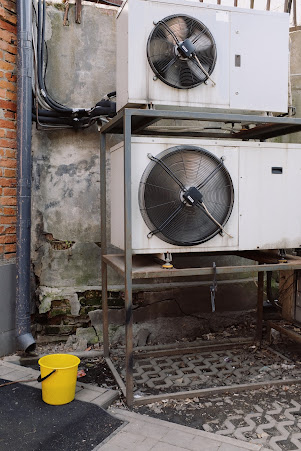Mastering the Components of AC Cooling System
When summer's heat becomes unbearable, we turn to air conditioning systems for relief. Behind the scenes, a complex cooling system works tirelessly to provide that soothing breeze. In this article, we will delve into the four key components that constitute an AC cooling system, shedding light on the crucial role each one plays.
The Heart of the AC - Compressor
The compressor serves as the central component in any AC unit, responsible for the circulation of refrigerant throughout the system. It operates like a miniature pump, converting low-pressure, low-temperature gas into high-pressure, high-temperature gas. This critical step is essential for elevating the refrigerant's temperature so that it can release heat outside.
The high-temperature, high-pressure gas, post-compression, finds its way into the condenser. Typically situated outside the building, the condenser's primary function is to dissipate heat. It facilitates the transfer of heat from the refrigerant to the surrounding air, causing the refrigerant to transition from a gas to a high-pressure liquid.
Cooling Magic of the Evaporator
The high-pressure liquid refrigerant then moves into the indoor unit, where the evaporator is located. The evaporator's main function is to absorb heat from the indoor air. As warm air passes over the evaporator coils, the refrigerant inside absorbs the heat, causing it to evaporate and transform back into a low-pressure gas. This process cools the air circulating through the room.
Regulating Flow with the Expansion Valve
The expansion valve acts as the gatekeeper, controlling the flow of refrigerant between the evaporator and the condenser. It reduces the pressure and temperature of the refrigerant, preparing it for the next cycle through the compressor. By managing this process, the expansion valve ensures that the AC system maintains the desired temperature and keeps the cycle running smoothly.
Keeping It Cool - Maintenance and Efficiency
In summary, these four components - the compressor, condenser, evaporator, and expansion valve - operate harmoniously to create the cooling effect that provides us with comfort during the hot summer months. The refrigerant continuously cycles through these components, absorbing and releasing heat, ensuring a pleasant indoor environment.
Maintenance Matters
Routine maintenance and proper care of these components are vital for maintaining your AC system in peak condition. Neglecting maintenance can lead to reduced efficiency, increased energy consumption, and system failures. Regular cleaning, checking for refrigerant leaks, and replacing worn-out parts are essential to keep your AC system running optimally.
Conclusion - The Technology of Comfort
Understanding the fundamental components of an AC cooling system can help you appreciate the technology that keeps your living spaces comfortable during hot weather. Regular maintenance and professional servicing will ensure your system operates effectively and efficiently, providing you with cool, crisp air when you need it most.

.jpg)

The AC cooling system is a technological marvel that has become an indispensable part of our daily lives, especially in regions with hot climates. Whether in homes, offices, or vehicles, the AC cooling system provides a refreshing escape from the sweltering heat, enhancing comfort and productivity.
ReplyDelete